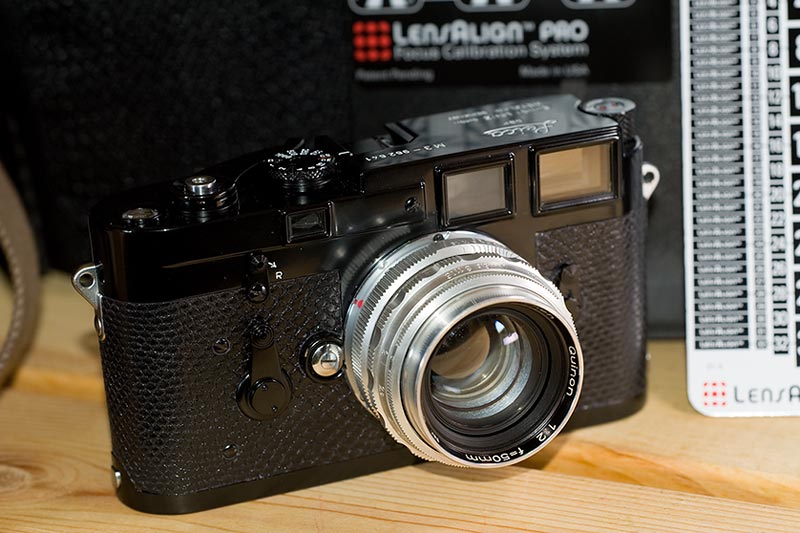dberger
Established
I am sure the Quinon is coated; mine appears coated, anyway. It was made in the 50's, and Steinheil knew what they were doing. It is a pretty contrasty for its time.Is the Quinon coated?

Cheers,
David
I am sure the Quinon is coated; mine appears coated, anyway. It was made in the 50's, and Steinheil knew what they were doing. It is a pretty contrasty for its time.Is the Quinon coated?

Ahhh, another Quinon!
The Quinon is coated, but doesn't have a strong colour shine on the lens surfaces. So I think it can only be single coating. I have to do some scanning, I did a straight comparison in the field between my Quinon and the DR Summicron. The separation in the Quinon's rear elements wasn't really pronounced then.
How many Quinons do we have at RFf? David, Stephen and me? Others?

How many Quinons do we have at RFf? David, Stephen and me? Others?
I made one for Raid in LTM using a J-3 mount.
Why is the Luxon so hard to find for sale?
Hi Raid,
Optical houses range from the great makers like Zeiss,Schneider,Voigtlander,to second tier makers such as Angenieux,Wollensak,Steinheil,to third tier makers such as Schact,Enna,Meyer and Isco.
Then you have lens makers that tend to make their optics for the mass produced lower quality cameras such as Staeble,and Roeschlein.
Braun tended to favour the lower end lens manufacturers for most of their lens requirements although some Super Paxettes could be ordered with Zeiss Tessars or Schneider Xenars but of course these cost considerably more.
The Roeschlein- Luxon lens did not have a big take-up with Paxette/Super Paxette buyers who either bought the expensive models fitted with Tessars or Xenars or the cheap models fitted with the Pointar lenses also made by Roeschlein.
It appears that Luxon lenses by Roeschlein were not in great demand and therefore not made in great numbers because,most photographers who wanted a Paxette/Super Paxette with the best lens available, and could afford it, went for the Zeiss Tessar or the Schneider Xenar from the top German optical makers.
Although Paxette lenses are 39mm screw fitting, they do not match Leica cameras ie.28.8 mm optical registration, neither do they have rangefinder coupling that matches the Leica.They can be adapted for use with the Leica but cost of adaptation and other shortcomings due to adaptation, wouldn't be cost justified.Why not put your money into a good quality Leica lens such as an Elmar or Summitar,or even a Canon or Nikkor optic, and should you decide later to need to sell you can recoup your original outlay.I am not deriding the Luxon,but how many photographers have an "adapted Paxette Luxon for Leica" on their "Wish List".
You will find that the VL engraving is indicating a "Versuch- lens" (Trial lens) and this would have been from the first small batch of Quinons that Steinheil produced to test the market and pin point any problems before Quinons went into full production.These early lenses sometimes differed slightly to the later batches due to early shortcomings in design being corrected in the final design.The fact that this lens is also engraved "5cm" indicates that it is an early example since Steinheil presumably followed the other West German optical houses in changing to marking lenses in millimeters in the mid 1950's when most Quinons were in production.
Does the Quinon use the same front lens cap as the Culminar 135mm f/4.5?
Could VL mean something different? Perhaps the 'L' refers to Leica, and the 'V' to something else?
VL= Visoflex Leica?
Is this a possibility?

